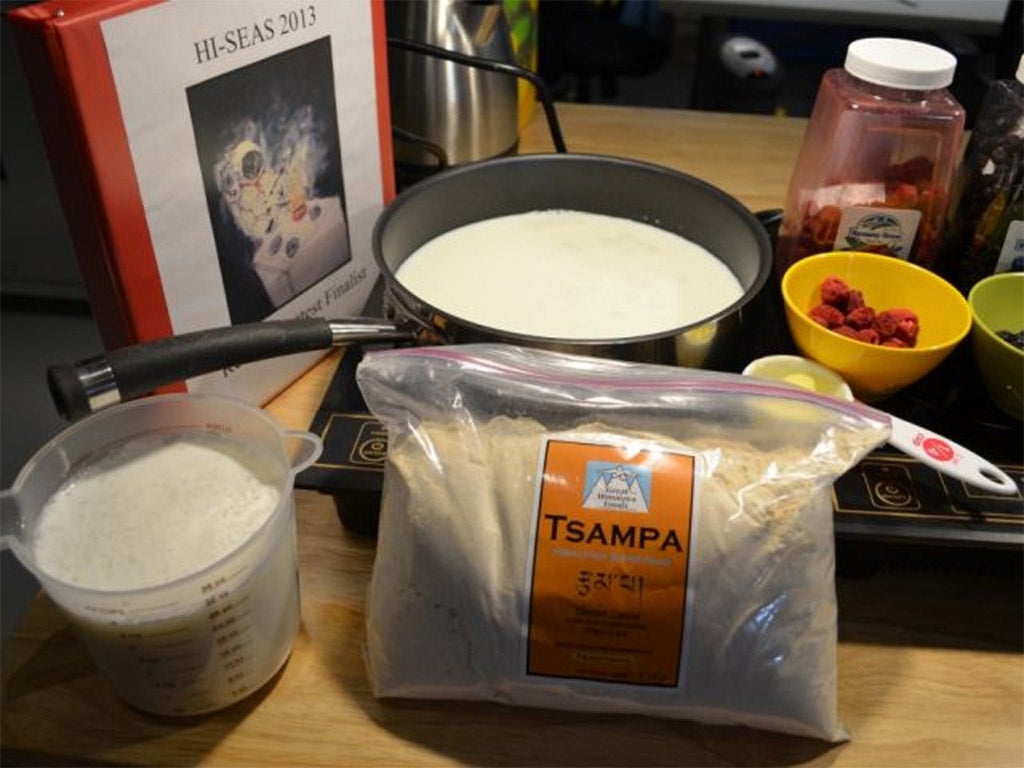Nasa takes a fresh look at in-flight food for Mars astronauts
Diet of dehydrated and freeze dried cuisine of the past will give way to fresh food cooked on the Martian surface

Astronauts preparing for the first manned mission to Mars will no longer have to make do with a steady diet of freeze-dried ice cream and may attempt to cook in the most extreme of conditions.
The steady, if unspectacular, diet of dehydrated and freeze dried cuisine “enjoyed” by space pioneers of the past will give way to fresh food cooked on the Martian surface.
Six “astronauts” who were locked away on a simulated Mars mission emerged from their 120-day isolation on the slopes of a Hawaiian volcano today, “carrying recipe ideas fit for a Martian colony”.
The Nasa-funded Hawaii Space Exploration Analogue and Simulation saw the group locked inside a mock habitat on the northern slope of the nearest thing to Mars that can be found on earth – the northern slopes of Mauna Loa.
Their quarters were stocked with a diverse range of pre-packaged and “shelf-stable” ingredients together with pots, pans, a stove, oven, microwave, bread maker and crock-pot. Foodstuffs eaten by the explorers included vegetable sushi, jambalaya and Russian dumplings called pelmeni.
“We decided to go backwards to go forwards and to look at the 19th century explorers’ approach to feeding a crew,” said Jean Hunter, of Cornell University, who was leading the study. “They got great psychological rewards out of exercising their creativity in the kitchen. If you’re out there for a couple of years, the walls around you don’t change. You can’t go outside and it’s the same people. You have to create your own variety and novelty.”
Previous space missions have showed that astronauts can suffer “burn out” from eating a steady diet of freeze dried food. The first astronauts, on the Mercury and Gemini missions, ate pureed foods.
“It was like serving them baby food in a toothpaste container,” said Vickie Kloeris, Nasa’s Space Food Systems Laboratory manager. Jon Glenn, the first person to dine in zero gravity, reported his 1962 meal of apple sauce was “relatively easy” to digest.
By the time of the Apollo missions, Nasa had developed a nutritionally balanced menu ranging from tuna salads to corn chowder. But all of them, including the Apollo 8’s Christmas Day meal in 1968 of the unappetising-sounding “themo-stabilised turkey, gravy and cranberry sauce,” could not compete with fresh ingredients.
Under the plans for a Mars mission, astronauts would eat freeze-dried food on the 300-day journey to the red planet, but once there they could attempt to grow their own fresh food.
Subscribe to Independent Premium to bookmark this article
Want to bookmark your favourite articles and stories to read or reference later? Start your Independent Premium subscription today.

Join our commenting forum
Join thought-provoking conversations, follow other Independent readers and see their replies